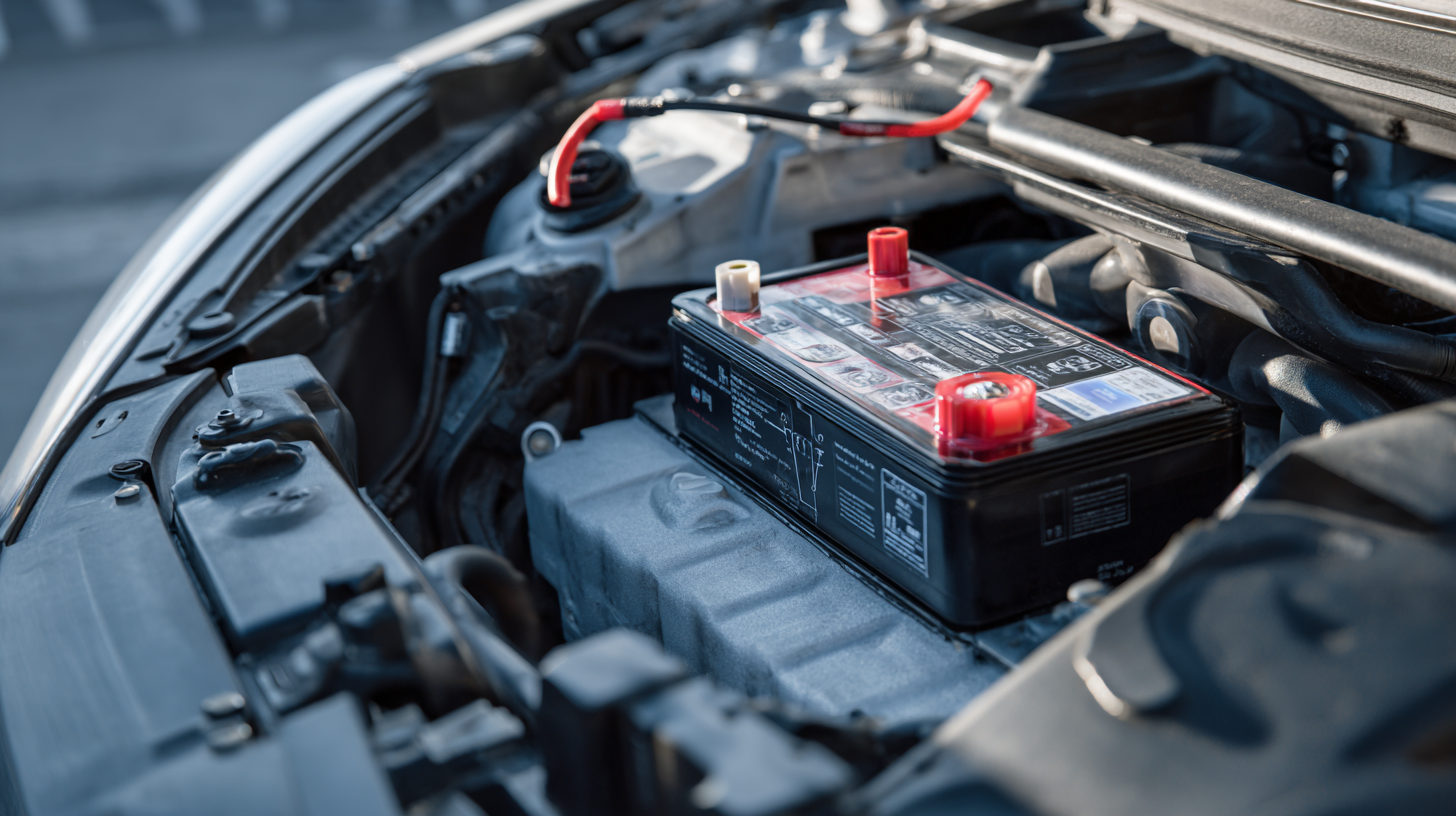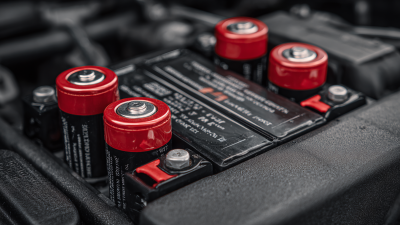Ultimate Guide to Choosing the Best Battery: Key Factors When You Buy a Battery for Optimal Performance
In an increasingly electrified world, the importance of choosing the right battery cannot be overstated. As reported by the International Energy Agency (IEA), global battery demand is projected to increase by 30% annually through 2030, driven largely by the rise of electric vehicles and renewable energy storage solutions.

With advancements in technology and a myriad of options available, knowing how to buy a battery that meets specific performance requirements is crucial. Factors such as battery chemistry, capacity, cycle life, and environmental considerations play significant roles in ensuring optimal performance. Understanding these elements can help consumers and businesses alike navigate the complex battery market effectively.
By making informed decisions, one can not only enhance device efficiency but also contribute to sustainability goals, making it imperative to explore the best strategies when looking to buy a battery.
Understanding Different Battery Types and Their Applications
When considering battery options, understanding the diverse types and their applications is crucial for making informed decisions. The micro battery market is projected to grow significantly, driven by advancements in thin film and printed batteries, which are lightweight and suitable for a variety of electronic devices. According to recent industry analyses, primary and secondary batteries each account for substantial shares, with secondary batteries, especially lithium-ion, dominating the consumer electronics landscape due to their reusability and efficiency.
Emerging battery technologies are also making headway, with alternatives to lithium-ion gaining traction for their sustainability and cost-effectiveness. Research indicates that innovations in polymeric materials—such as active materials, membranes, and binders—are expected to enhance both the performance and safety of next-generation batteries. Moreover, lithium-ion batteries, while widely used, face ongoing scrutiny regarding safety concerns, which underscores the necessity for continual development in battery technology to address efficiency, cost, and safety issues. As the industry evolves, staying informed on these advancements will be key for consumers and manufacturers alike.

Evaluating Battery Capacity and Voltage Ratings for Your Needs
When selecting a battery, understanding capacity and voltage ratings is essential for ensuring optimal performance tailored to your specific needs. Battery capacity, typically measured in ampere-hours (Ah), indicates how much energy a battery can store and deliver over time. A higher capacity means longer usage periods without recharging, making it crucial for applications like electric vehicles and renewable energy systems, where efficiency and endurance are key.
Voltage ratings, on the other hand, signify the electrical potential provided by the battery. Choosing a battery with an appropriate voltage rating is vital to match the requirements of your devices, ensuring they operate correctly and efficiently.
Recent advancements in battery health assessment methods, including the evaluation of battery capacity and state of health through data-driven techniques, emphasize the importance of these ratings. Accurate evaluation not only helps in determining battery lifespan and safety but also plays a critical role in the development of next-generation batteries, such as solid-state lithium-sulfur batteries. These innovations promise enhanced energy density and improved performance metrics, further supporting the strategic design of energy systems that rely on effective battery storage solutions. Adopting standardized metrics for capacity and health can ultimately lead to improved reliability and effectiveness in energy management.
Identifying Key Features for Enhanced Battery Performance
When choosing a battery for optimal performance, several key features should be closely examined. First and foremost, battery chemistry plays a crucial role in determining the energy density and discharge rates. Lithium-ion batteries, for instance, offer a high energy density and minimal self-discharge, making them suitable for devices requiring long-lasting power, such as smartphones and laptops. In contrast, lead-acid batteries, though heavier and bulkier, are often preferred for applications where cost-effectiveness and reliability are paramount, like in automotive settings.
Another critical factor to consider is the battery's capacity, measured in amp-hours (Ah). This value indicates how much energy the battery can store and deliver over time. A higher capacity is essential for devices that demand intensive power usage or extended runtime. Additionally, the battery's cycle life—how many charge and discharge cycles it can endure before its performance begins to deteriorate—should be evaluated. A battery with a longer cycle life not only provides better longevity but also represents a more sustainable choice, reducing the frequency of replacements over time. By understanding these key features, consumers can make more informed choices, ensuring they select a battery that meets their specific needs and enhances overall performance.
Assessing Brand Reputation and Customer Reviews for Reliability
When selecting a battery for optimal performance, assessing brand reputation and customer reviews is critical. According to a recent industry report by Battery University, approximately 70% of consumers prioritize brand trust when making their purchasing decisions. Well-known brands often invest more in research and development, resulting in batteries that not only perform better but also last longer.
Moreover, customer reviews can provide insights into real-world performance. A study by Consumer Reports found that batteries from reputable brands consistently received higher ratings for reliability and longevity, with an average of 4.5 stars, compared to 3.2 stars for lesser-known brands. Before making a purchase, it is beneficial to read through user testimonials and look for recurring themes regarding performance and durability.
**Tips**: When evaluating brand reputation, check for certifications and industry awards that indicate quality assurance. Additionally, leverage review aggregation websites to compare customer feedback across multiple platforms. This comprehensive approach can lead to informed decisions, ensuring you choose a battery that meets your performance expectations.
Battery Performance Characteristics
Considering Environmental Impact and Recycling Options for Batteries
When selecting a battery, environmental impact and recycling options should be at the forefront of your considerations. Batteries, particularly those containing heavy metals and toxic substances, can pose significant risks to the environment if not disposed of properly. Choosing batteries from manufacturers that prioritize sustainability and use eco-friendly materials can greatly reduce your ecological footprint. Look for certifications or labels that indicate a commitment to environmentally safe practices.

Additionally, understanding recycling options is crucial in your battery purchasing decision. Many regions have established recycling programs to safely handle used batteries and recover valuable materials. Opting for batteries that are easily recyclable helps ensure that fewer resources are wasted, contributing to a circular economy. Therefore, inquire about the recycling process for the batteries you consider and seek retailers or programs that promote the proper disposal of used batteries. By consciously choosing batteries with their environmental impact and recycling potential in mind, you contribute to a greener future while achieving optimal performance.
Related Posts
-

7 Secrets to Finding the Best Battery Shop for Your Needs
-

7 Essential Facts About the Best UPS Backup System for Your Business Needs
-

The Ultimate Guide to Choosing the Best UPS Backup System for Your Home Office
-

How to Extend the Lifespan of Your Car Batteries: Essential Tips and Tricks
-

Why 99% of Businesses Fail Without a Reliable UPS Backup: Insights from Recent Industry Reports
-

Revolutionizing Energy Storage: The Future of Battery Solutions for Sustainable Living
